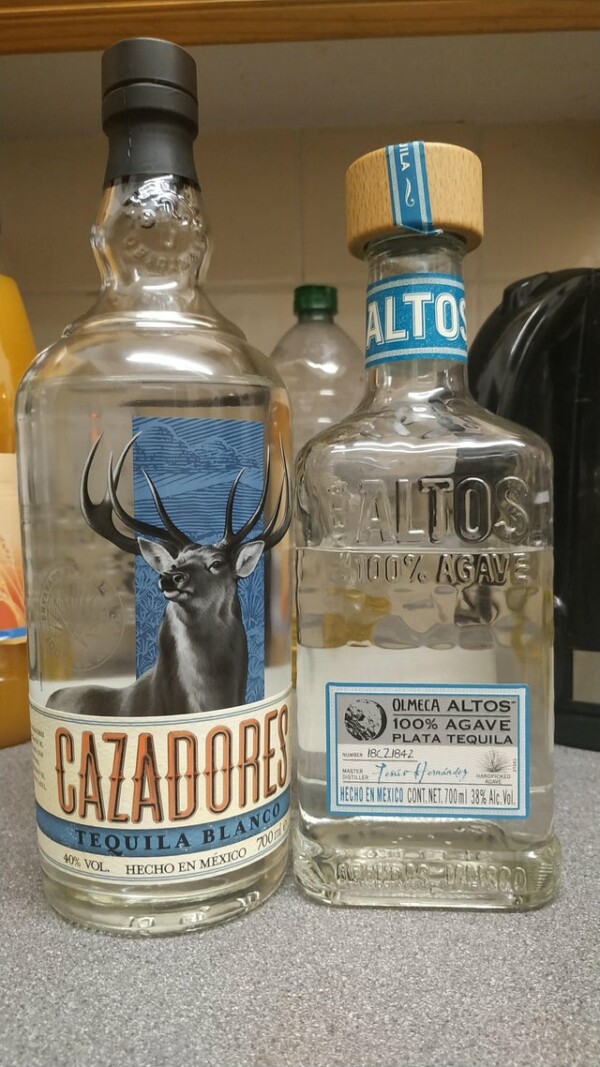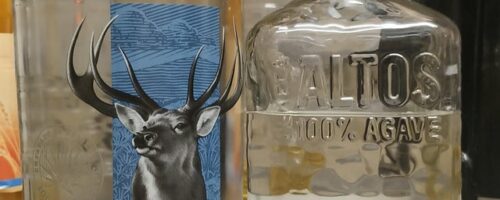
Tequila, Jalisco, Mexico
How is it produced?
Tequila is made from the spiny desert plant agave tequilana. Agave tequilana is harvested after six to eight years of maturation but before the crop flowers, this is the time the plant provides the sweetest taste. The heart of the agave, called the pina, is roasted and juiced. This juice is then fermented and distilled to produce tequila. The alcohol is then bottled or left to mature depending on the brand or quality of the liquor.
Describe the supply chain to the store shelf in Canada:
Jimadores, agave farmers, will harvest their plants and sell them to factories to be processed. The largest companies have their own agave plantations, distilling factories, packaging houses, storage rooms, and distribution services (Tetreault et al., 2021). However, smaller producers have contracts with factories, or they rely on “coyotes,” intermediaries, to sell their plants (Tetreault et al., 2021). After the distilling process, tequila is stored in bottles or bulk containers to be distributed across the nation or exported out of the country. Although the tequila in Canada is produced in Mexico, most of it goes through the United States (Tridge, n.d.). In British Columbia, The Liquor Distribution Branch is a governmental organization responsible for overseeing importation, the wholesale distribution and retail sale of alcohol. The Canadian government has a monopoly over the sale of alcohol, however private imports are allowed. For instance, Lorenz Agave Spirits is the top sourcer of tequila in British Columbia (Bartender Spirits Awards, n.d.).
What is the power balance between the producer and seller?
The top tequila companies dominate the market. In 2019 142 distillers marketed 1,441 brands of tequila, however 10 companies controlled 76.4% of the global market, with Jose Cuervo having 30% of the share (Tetreault et al., 2021). “Reverse Leasing Agreements,” which require farmers to relinquish control of their lands and all aspects of agave production, enable tequila companies to externalize environmental costs during the six to eight years agave plants take to mature and to become less reliant on small-scale agave producers (Tetreault et al., 2021). And in order to keep labour costs down, companies hire indigenous migrant workers from southern Mexico to perform unskilled but incredibly taxing work for little pay (Tetreault et al., 2021). Furthermore, coyotes are used by companies to enter non-risk contracts with farmers, allowing them to purchase agave if needed or leave it when the harvest is not required (Tetreault et al., 2021). Because it takes several years for an agave plant to mature, production is less reliable and demand is less predictable, making the cost of agave especially volatile (Nebeker, 2020). When supply is high, coyotes offer extremely low prices for agave (Nekeber, 2020).
Can you recommend changes to the system to improve the balance?
Fair trade networks, that seek to level the power imbalance between small-scale farmers, intermediaries and corporations, are just beginning to emerge in Mexico (Tetreault et al., 2021). And major distillery companies, like Patrón are starting to issue price guarantee contracts for agave producers (Nebeker, 2020). Expanding price guarantee contracts to reach more farmers and promoting fair trade networks would be beneficial, as farmers would get a fair price for their crops and stabilize their incomes.
Patrón is one of the tequila companies that has capitalized on the premium tequila industry, focusing on the quality, not the quantity of the drink, a way that Jimadores have done for centuries, with artisan technology, smaller batches, and earthen ovens (Tetreault et al., 2021). Therefore, there is a market for traditional, more expensive tequila, that would benefit and suit small-scale farmers and distillers. However, small-scale producers would first need to have access to trading networks, and not have to rely on local coyotes.
It would be beneficial to update the property laws to include Mexican mezcal producers outside the current tequila boundaries that are losing out on revenue as they cannot market their products as tequila.
References/Resources:
Aceves, C. (2021, February 26). How does tequila import and export work? Aceves Spirits. https://acevesspirits.com/blog/how-does-tequila-import-and-export-work/
EarthSayers.tv (2010, October 28). Sustainability and externalizing costs . [Video]. YouTube. https://www.youtube.com/watch?v=Pj0WRGZBX6M.
Godoy, E. (2009, August 3). Tequila leaves environmental hangover. Inter Press Service. http://www.ipsnews.net/2009/08/tequila-leaves-environmental-hangover/
Nebeker, R. (2020, December 4). The sustainability challenges that threaten the agave industry. Food Print. https://foodprint.org/blog/agave-industry/
Tetreault, D., McCulligh, C., & Lucio, C. (2021). Distilling agro-extractivism: Agave and tequila production in Mexico. Journal of Agrarian Change, 21(2), 219–241. DOI: 10.1111/joac.12402
Tridge. (n.d). Tequila. Retrieved August 10, 2021, from https://www.tridge.com/intelligences/tequila?q=tequila

